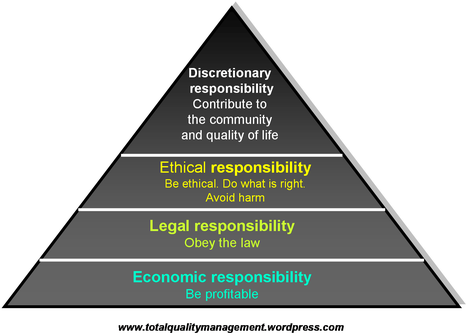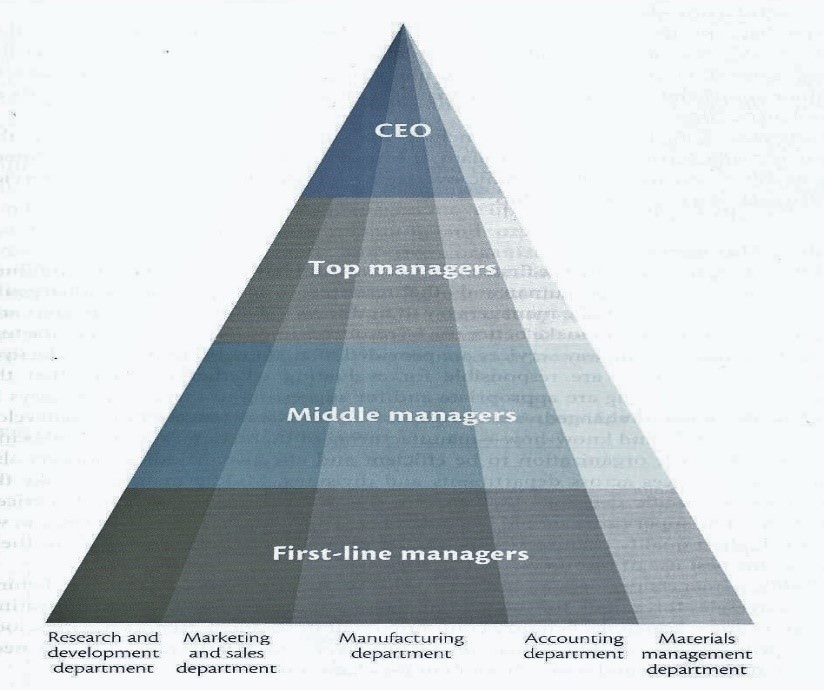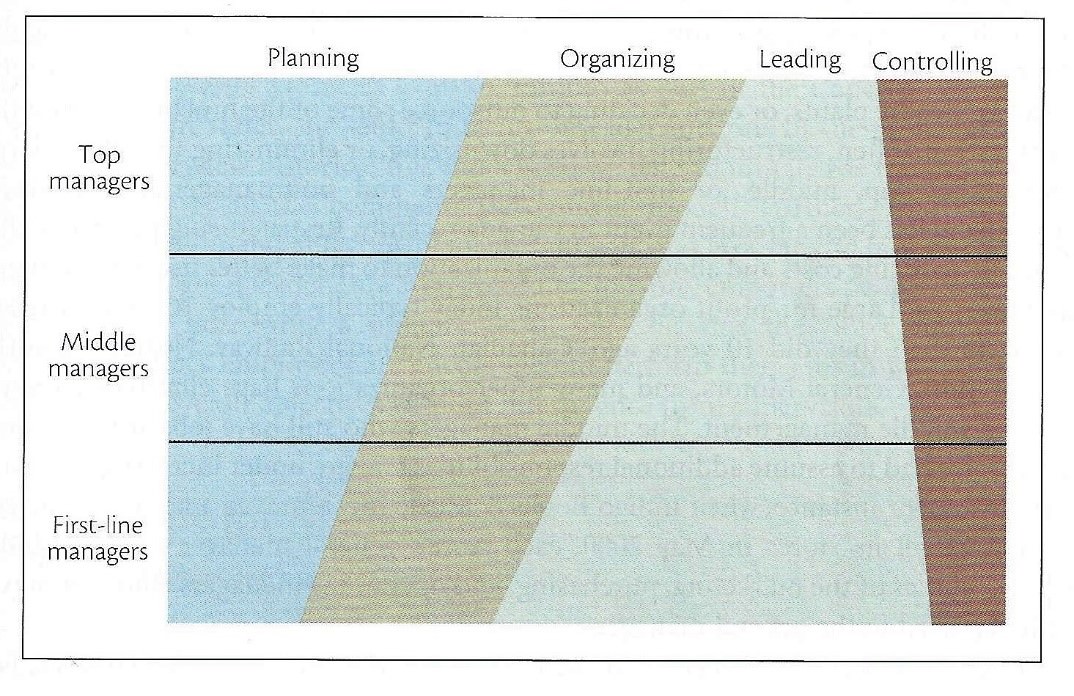Management: The four functions
Management is a ubiquitous term that is applied to a range of human endeavor. This make sometimes makes it difficult to discuss the topic given the number of potential meanings and definitions applied to the concept.
Author: David Johnson
Management is a ubiquitous term that is applied to a range of human endeavor. This make sometimes makes it difficult to discuss the topic given the number of potential meanings and definitions applied to the concept. This paper is structured to offer a workable definition based on the functions of management and then describe these functions in broad terms.
Keywords:
Management, functions of management, controlling, leading, organizing, planning, levels of management
Definition of Management
Management, like many other terms or titles, has a few definitions depending on the orientation and knowledge of the person crafting the definition. One example can be drawn from a desk top dictionary:
“Management/ noun. 1) The process or an instance of managing or being managed. 2 The professional administration of business concerns, public undertakings, etc.” (Canadian Oxford Dictionary ,1998)
Giving a nod to the internet age, some definitions are available at the touch of a button using any number of search engines. The validity of the definition should be carefully considered and researched, however a reasonable example:
“Management is the process of reaching organizational goals by working with and through people and other organizational resources.” (Management Innovations, 2008)
A third source of definitions comes from the world of academia where any number of studies and reports examine the concept of management. This is where the work of trying to tease out a viable, broad definition takes place. One such definition is offered by G.R. Jones in his 1995 work, Organizational Theory. Jones defines management in terms of its functions and objectives.
“Management is the planning, organizing, leading, and controlling of resources to achieve goals effectively and efficiently”
The elegance of this definition is that it encompasses the concept of management whether applied to an individual, a sole proprietorship, a partnership, or a corporation in either the public or the private sector.
For the purposes of this discussion the definition offered by Jones will form the working foundation.
Function of Management
Before we embark on a review of these functions it should be noted that the definition attached some quantifiable metrics to the term management, so that ideas can be compared, synthesized and contrasted. The two concepts that help distinguish good management from poor management are efficiency, a quantitative measure, and effectiveness, a qualitative metric
Organizations are efficient when they manage resources to maximize their utility in the process of producing a good or service. Organizations are effective when they achieve qualitative goals and targets that are customer centric, such as satisfaction. In other words, it is not a question of how much but rather how well the organization achieves its goals. Peter Drucker summed it up as “Efficiency is doing things right; effectiveness is doing the right thing” (Drucker, 1974).
Planning
What is to be done?
Who is going to do it?
How are they going to complete the task?
These are the types of question management must ask under the banner of planning. Using all of the intelligence gathered from data analyses the function of management is to create a ‘road’ map’ to success for the organization. The success management has in performing this function has a direct positive correlation on the success of the organization. Great planning is the foundation for both efficiency and effectiveness (Drucker, 1974).
Planning is an ongoing and continuous process that requires management to monitor progress as well as the business, social and governmental environments to identify new and emerging opportunities for an organization (Thorn, 2012)
A direct outcome of the panning function is the development of strategy and tactics to accomplish the objectives defined by the planning function.
Organizing
The second principle function of management is to organize the workplace in a manner that allows people and groups of people to work together to achieve the goals of the organization. To succeed on both the effectiveness and efficiency scales the organization must deploy resources, both human and material, in a manner that aligns these resources to produce the greatest possible outcome.
One of the outcomes of organization is the concept of organizational structure. Grouping people into departments, work units, or other operational entities defines these interactions as does the hierarchy and leadership structure required to help the organization reach its potential.
Amongst other benefits the importance of organizing includes (Hubpages, 2014):
- Allows organizations to reap the benefit of specialization
- Provides the optimum utilization of resources
- Helps in effective administration
- Provides channels for expansion and growth
- Achieves co-ordination among different departments
- Creates scope for change
Controlling
Creating exceptional plans, developing the perfect organizational matrix and finding the perfect leader is of little value unless you can measure performance and ensure the organization stays on track. This is the domain of the controlling function.
A simple model can be used to illustrate the process of the control function:

Figure 1: Five Step Process
(Williams, Linda & Lumen Learning, undated)
Control cannot exist without plans, goals, and objectives and it is practice at all levels of management within an organization.
Leading
The leadership task includes creating a vision, focus and direction for the organization that will encourage employees to work at high levels and to ensure their activities are coordinated to achieve maximum results for the organization. Leadership has and will continue to be one of the most studied aspects of human activity. Without leadership, in some form or function, there would be no pyramids of Egypt, Great Walls in China, lunar landings, or any other achievement of note, either good or evil. Although one can examine the past and make a statement like this, it rests on an intuitive approach to state the same conditions will apply in the future. Great achievements will not be accomplished without leadership, in some form or function.
Leadership is about behaviors and creating the conditions for success. Kouzes and Posner developed a construct that can fairly represent the aspects of leadership actions. The Five Practices of Exemplary Leadership model define the transformational leader (Kouzes & Posner, 1995);
- Model the way – leaders become role models and demonstrate, through action, how members of the organization should treat each other and their customers.
- Inspire a shared vision – leadership is about establishing a vision and then promoting that vision in their actions, thoughts, and speech
- Challenge the process – Leaders do not settle for the status quo, they constantly seek improvement and take risks. They understand risk taking leads to mistakes and create a climate where mistakes are learning opportunities
- Enable others to act – Leaders encourage and develop teams that show mutual respect and that sustains effort. They create an atmosphere of trust that encourages all to feel capable and engaged.
- Encourage the heart – Leaders recognize and acknowledge contributions from others. They make people in the organization feel valued and needed.
Levels of Management
The definition of management and the description of the functions of management suggests that this is a complex area of study. To get the true nature of the complexity of management it is necessary to recognize that there is depth as well as breadth and height to the institution. Management does not occur at a single level, nor do managers all perform the same depth of capacity in each of the functional areas. To further add to the complexity of the model it is important to recall that the organization is subdivided into departments or areas of common interest, each of which has levels of management.

Figure 2: Management Hierarchy
The organization is divided vertically in a hierarchical format and the management function is divided horizontally by management levels. The management levels in each horizontal department have similar duties, tasks, and authority. (Jones, George, Rock, 2007)
Although all levels of management have responsibility in all the functions, they do not exercise these in equal amounts. First line managers, as an example, have input into the planning function but at a level quite removed from top management. Once again, a graphical illustration brings this concept more clarity.

Figure 3: Relative time spent in each function at different levels
Each function of management has a place and importance in the operation of a modern organization, be it private or public sector. The most successful organizations have strong functioning processes and people performing all four functions in the mangement field and all levels.
Bibliography:
Allan, Gemmy (1998) Supervision, Retrieved Dec 18, 1016 from Dallas county Community College, Department of Business Administration and Management http://www.ollie.dcccd.edu/mgmt1374/book_contents/4directing/leading/lead.htm
Avolio, B., Waldman, D., & Yammarino, F. (1991). Leading in the 1990’s: The four I’s of transformational leadership. Journal of European Industrial Training,15(4)
Burns, J.M. (1978), Leadership. New York, Harper Rowe
Canadian Oxford Dictionary (1998), Barber, Katherine, Editor Oxford University Press, Don Mills, Ontario
Dixon, D, (1998), The Balanced CEO: A transformational leader and a capable manager. Health Forum Journal, 41(2)
Drucker, P (1974) Management: Tasks, Responsibilities, Practices, Harper and Rowe, New York, NY
George, Claude (1968) The History of Management Thought (1st Edition). Prentice- Hall, Englewood Cliffs, N.J.
Heimrich, B., (2016), 33 Ways to Define Leadership Business News Daily, Retrieved Dec 18, 2016 12:21 PM from http://www.businessnewsdaily.com/3647-leadership-definition.html
Hubpages, (2014) Organizing Function of Management, Retrieved Dec 12, 2016 from http://hubpages.com/business/ORGANISING-Management-principles
Jones, G., George, J., Rock, M. (2007) Essentials of Contemporary Management, 2nd Edition, McGraw Hill, Ryerson, Toronto, Canada
Jones, G.R, (1995), Organizational Theory, Addison- Wesley, Reading, MA
Kouzes, James M.,Posner, Barry Z. (1995) The leadership challenge :how to keep getting extraordinary things done in organizations San Francisco : Jossey-Bass,
Management Innovations (2008), Define Management and Its Functions, retrieved from https://managementinnovations.wordpress.com/2008/12/03/define-management-its-functions/
Thorn, Rayanne (2012) Defining the Functions of Management, Huffington Post, retrieved Sept 9, 2016 from http://www.huffingtonpost.com/rayanne-thorn/functions-of-management_b_1723977.html?
Simmering, Marcia J. (undated), Management Levels Retrieved from Reference for Business December 23, 2016 http://www.referenceforbusiness.com/management/Log-Mar/Management-Levels.html
Spahr, Pamela (2015) What is Transformational Leadership? How New Ideas Produce Impressive Results, Retrieved from St. Thomas University, Online, Jan 31, 2017 http://online.stu.edu/transformational-leadership/
Williams, Linda & Lumen Learning. (Undated) Introduction to Business - Controlling: A Five Step Process Retrieved December 16, 2016. https://courses.lumenlearning.com/introbusinesswmopen/chapter/reading-a-five-step-control-process